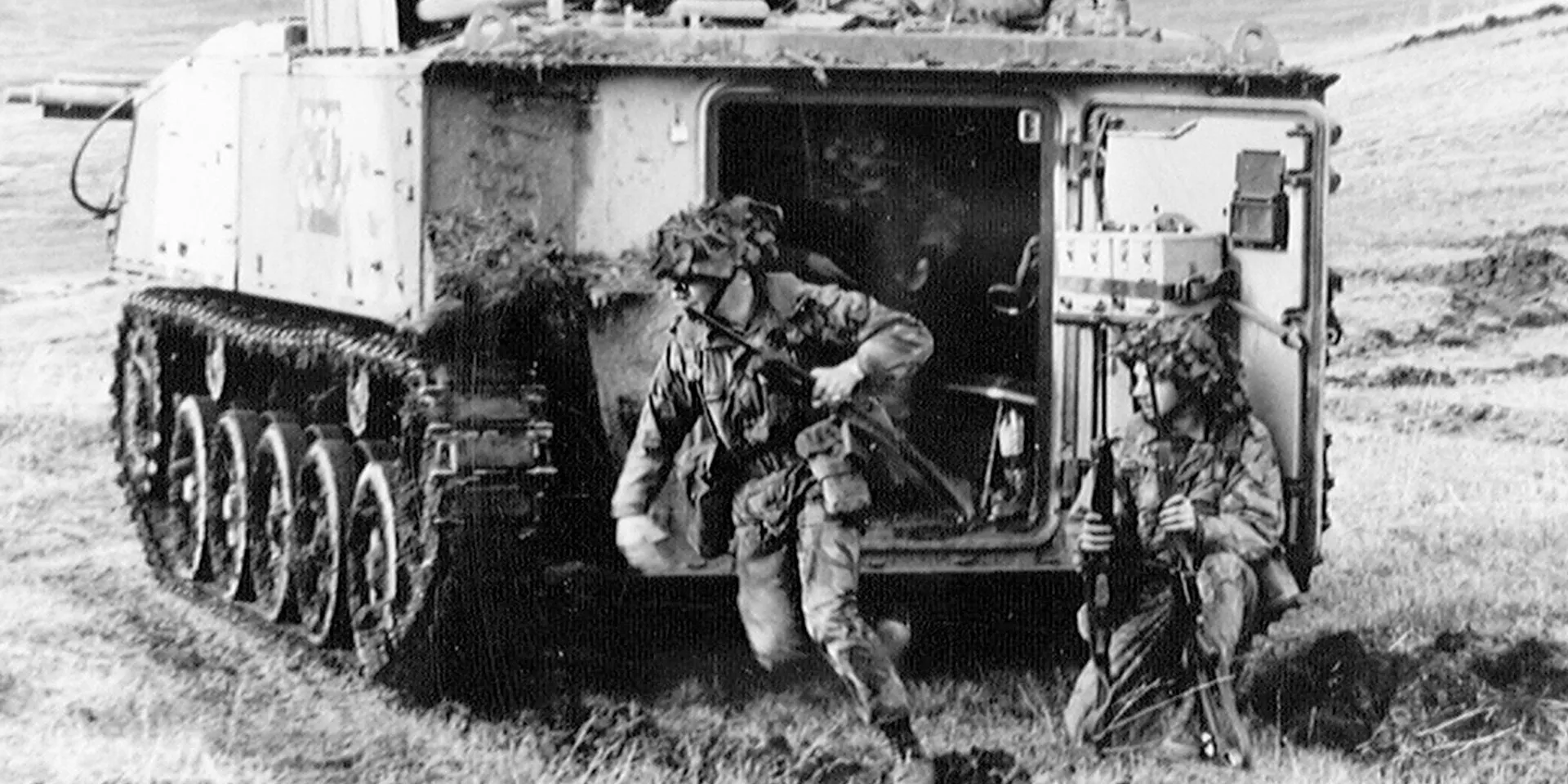
King's Regiment troops exiting from an FV 432 Mark I, c1977
Origins
In 1958, The King’s Regiment (Liverpool) and The Manchester Regiment merged to form The King’s Regiment (Manchester and Liverpool). Ten years later, it dropped its regional subtitles, becoming simply The King’s Regiment.
During its short existence, this single-battalion unit took on several different roles, alternating between light infantry and mechanised or armoured infantry.

Cap badge, The King's Regiment, c1960

Junior Leaders and a warrant officer of the King’s Regiment, c1960
Deployments
In 1959, a year after its formation, the regiment was sent to Kenya towards the end of the Mau Mau rising. Over the next decade, it also deployed to Kuwait, Berlin, Northern Ireland and the West Indies.
The King’s Regiment spent most of the 1970s and ‘80s alternating between England and Northern Ireland. However, it also spent three years in Hong Kong from 1972, and a combined total of seven years in West Germany with the British Army of the Rhine. It also garrisoned the Falklands for six months in 1986.
In 1990, it returned to Northern Ireland for a final two-year tour. Except for a posting to Cyprus from 1996 to 1998, it was principally based in England after that.
The regiment sent a detachment to join 19th Mechanised Brigade in the invasion of Iraq in 2003 and a single company to Kosovo in 2004.
Legacy
In 2006, it amalgamated with The King’s Own Royal Border Regiment and The Queen’s Lancashire Regiment to form The Duke of Lancaster’s Regiment.
Regimental museums
The National Army Museum works with a network of Regimental and Corps Museums across the UK to help preserve and share the history and traditions of the Army and its soldiers.
Discover more about The King’s Regiment by visiting the Museum of Liverpool.






